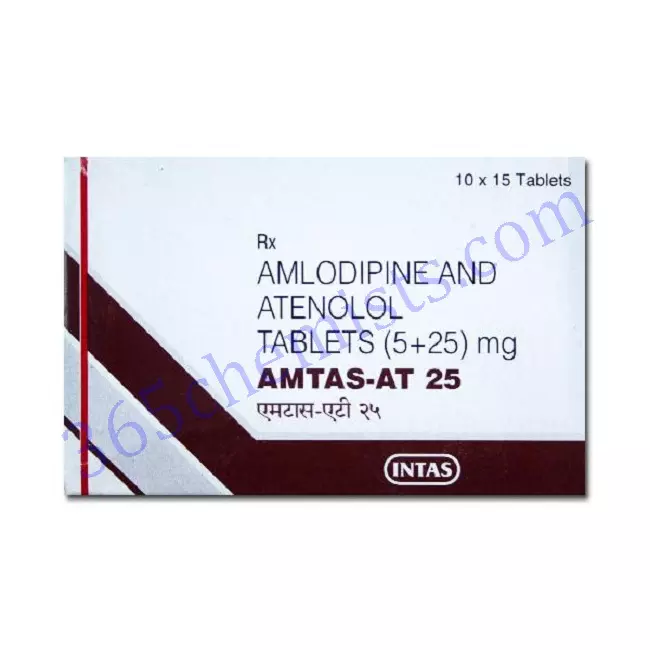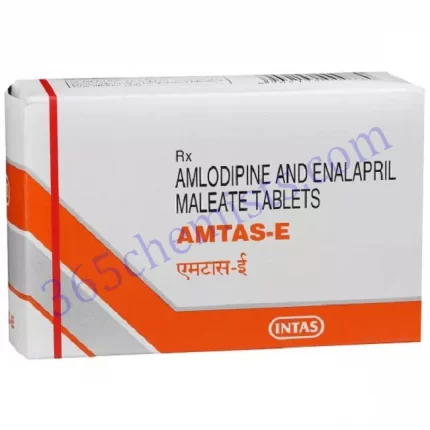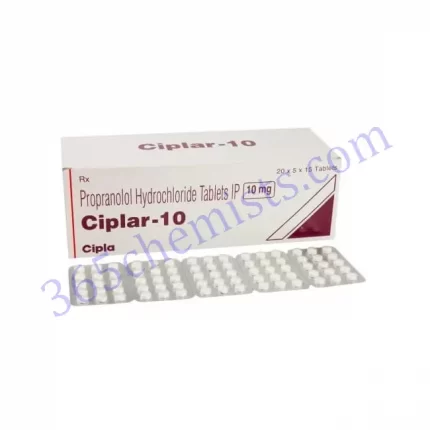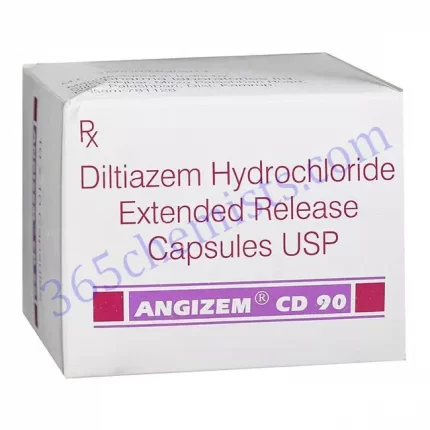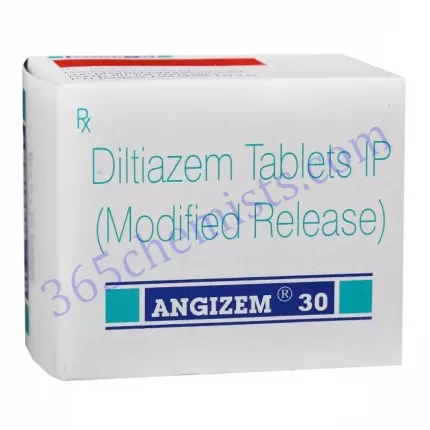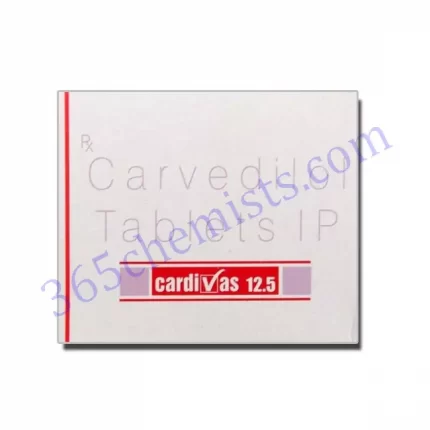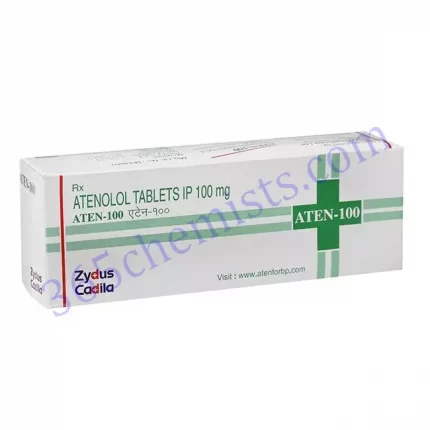Amtas-AT 25 Tablet (Amlodipine 5mg/Atenolol 25mg): A Comprehensive Description
Amlodipine and Atenolol are the two components that are responsible for the therapeutic effects of the combination drug known as Amtas-AT 25 Tablet. The primary application for this medicine is in the therapy of hypertension, which is also known as high blood pressure. In order to assist in the reduction of blood pressure, the benefits of Amlodipine, which is a calcium channel blocker, and Atenolol, which is a beta-blocker, are combined in this tablet. In this in-depth analysis, we will discuss the ingredients that make up Amtas-AT 25 Tablet, as well as its mode of action, therapeutic applications, recommended dosage, potential adverse effects, and safety precautions.
Composition and Mechanism of Action
The active ingredients in one form of the medication called Amtas-AT 25 Tablet are called amlodipine and atenolol. Amlodipine is able to lower blood pressure because it acts by blocking calcium channels in the blood arteries. This results in vasodilation and reduced peripheral resistance, both of which lead to a reduction in blood pressure. Atenolol slows the heart rate and lowers the amount of blood pumped out of the heart as a result of its ability to inhibit the effects of adrenaline on beta receptors.
Therapeutic Uses
The primary purpose for which the Amtas-AT 25 Tablet is prescribed is for the management of hypertension. This medication helps lower blood pressure and reduces the risk of cardiovascular consequences associated with uncontrolled hypertension, such as heart attack, stroke, and renal issues. These cardiovascular diseases are associated with uncontrolled hypertension. Amlodipine and Atenolol both have the ability to lower blood pressure. Additionally, it can be utilised in the treatment of specific types of angina, often known as chest discomfort, and in the prevention of additional heart-related issues in patients who have a previous history of cardiovascular illness.
Related Product
Amtas M 50 Tablet
Amtas M 25 Tablet
Amtas E Tablet
Amtas AT 25 Tablet
Amtas LP Tablet
Amtas HT Tablet
Amtas AT Tablet
Amtas 10 Tablet
Amtas 5 Tablet
Amtas 2.5 Tablet
Dosage and Administration
Amtas-AT 25 Tablet dosing should be determined by a healthcare practitioner based on the individual’s condition and response to treatment. This should be done based on the patient’s history. It is essential to ensure that the dosage and administration instructions provided by the doctor are strictly adhered to at all times. The tablet should be swallowed whole, either with or without meals, and ideally should be taken at the same time every day. Take the tablet as directed, along with a full glass of water. Even if you are feeling OK, it is imperative that you continue taking the Amtas-AT 25 Tablet exactly as directed by your doctor because high blood pressure frequently does not have any symptoms.
Possible Side Effects
Amtas-AT 25 Tablet, like any other medicine, has the potential to cause adverse effects in certain people. Dizziness, weariness, headache, cold extremities, gastrointestinal problems such as nausea or diarrhoea, and changes in heart rate or rhythm are some of the common adverse effects that may occur. These unwanted effects are typically not severe and only last for a short period of time before disappearing on their own as the body adjusts to the medicine. Nevertheless, it is imperative that you seek medical assistance if any of these unwanted effects continue or become even worse. In extremely unusual instances, patients may experience more serious adverse effects, such as allergic responses or heart-related issues. In the event that any of these potentially life-threatening adverse effects manifest, prompt medical assistance is essential.
Precautions and Warnings
Before beginning treatment with Amtas-AT 25 Tablet, it is essential to communicate any preexisting medical problems, allergies, or other medications that you are currently taking to your healthcare professional. This information is helpful in ensuring that the medication is used in a way that is both safe and effective. Patients who have a history of illnesses affecting the heart or lungs, diabetes, thyroid issues, or certain types of allergies should be treated with extra caution. There is a possibility that the Amtas-AT 25 Tablet will interact negatively with other medications. These medications may include other hypertension drugs, medications for heart diseases, non-steroidal anti-inflammatory drugs (NSAIDs), and some diabetes treatments. As a result, it is essential to make the healthcare practitioner aware of any and all medications that are currently being taken.
Safety and Precautions
In order to ensure that the Amtas-AT 25 Tablet is used effectively and safely, certain safety precautions should be adhered to when using the product. The following are some essential considerations to keep in mind:
- Allergies: If you have any known allergies to drugs, including Amlodipine, Atenolol, or any other medications, you should inform your healthcare professional. This information is essential in lowering the risk of any allergic responses that may occur.
- ailments Relating to Your Health Be sure to disclose any and all ailments relating to your health, such as diabetes, lung diseases, thyroid issues, heart conditions, and allergies. Because of these factors, it is possible that the Amtas-AT 25 Tablet is not appropriate for your needs.
- Pregnancy and Breastfeeding: If you are pregnant, have plans to become pregnant, or are breastfeeding, you should talk to your doctor about the potential risks and advantages of using Amtas-AT 25 Tablet throughout these stages of your life. They will decide whether or not the drug is suitable for your condition before giving it to you.
- Interactions with Other Medications There is a possibility that some medications, including as other hypertension treatments, medications for heart diseases, non-steroidal anti-inflammatory drugs (NSAIDs), and certain diabetes medications, will interact with Amtas-AT 25 Tablet. Talk to your primary care physician about all of the medicines you are currently taking so that you can avoid any negative drug interactions.
- Monitoring Your Blood Pressure and Heart Rate It is imperative that your blood pressure and heart rate be monitored on a regular basis while you are taking Amtas-AT 25 Tablet. You should let your healthcare practitioner know about any noteworthy changes or anomalies that you see.
- Lightheadedness, dizziness, and weariness are some of the side effects that may be brought on by using Amtas-AT 25 Tablet. Until you are aware of how the drug affects you, it is best to refrain from engaging in activities such as driving or operating machinery that need attentiveness.
- Amlodipine, which is one of the active ingredients in Amtas-AT 25 Tablet, may cause a very modest rise in one’s blood sugar levels if they have diabetes. If you have diabetes, it is important that you test your blood sugar levels on a regular basis and communicate any significant changes to your healthcare physician.
Conclusion
A highly effective therapy option for hypertension is the Amtas-AT 25 Tablet, which combines the medications amlodipine and atenolol. It helps lower blood pressure and reduces the risk of cardiovascular problems by combining two types of blood pressure medication: a calcium channel blocker and a beta-blocker. However, it is essential to take the medication exactly as directed, to report any adverse effects in a timely manner, and to stick to the safety measures that have been outlined.
Please discuss the usage of the Amtas-AT 25 Tablet with your primary care physician or another qualified medical practitioner for individualised advice and direction. They will be able to make precise recommendations for you based on your individual requirements and health background. Amtas-AT 25 Tablet has the potential to be an effective tool for the management of hypertension and the promotion of cardiovascular health if it is used correctly, monitored carefully, and examined on a frequent basis.

